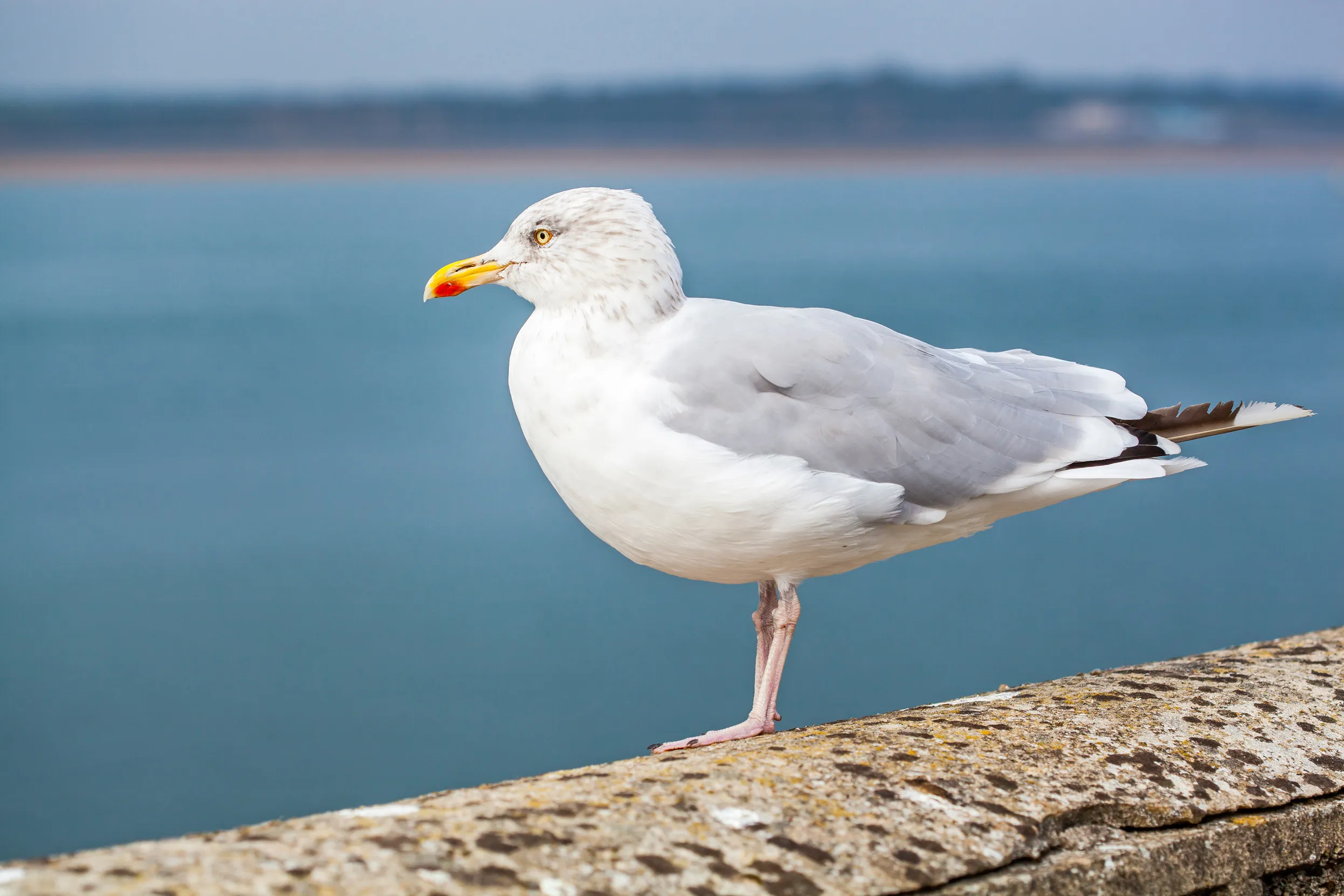Advice
March Birds of the Month: birds to see in early spring
Get your fill of fresh spring air! Here are six birds you could see on a countryside stroll now.
Did you know that there is more than one type of ‘seagull’? In fact, there are around 50 species worldwide and six types which commonly breed in the UK! Perhaps you have that noticed that not all of them are seen by the sea?
.jpg)
Since the 1940s, some Herring and Lesser Black-backed Gulls have used rooftops for nesting. It's not known exactly what prompted this move, but abundant inland sources of food and safe, predator-free nesting sites on rooftops were definite factors.
The birds nesting on roofs of houses are most likely to be Herring Gulls, whilst Lesser Black-backed Gulls tend to concentrate on the larger expanses of industrial or commercial buildings with flat roofs.
Traditionally coastal birds, a gull’s diet would typically consist of fish and marine invertebrates. It’s thought that warming sea temperatures changing the distribution of fish, along with industrial overfishing, are causing declines in their populations.
Although numbers of roof-nesting gulls, especially Lesser Black-backed, are still increasing, the overall population of Herring Gulls is plummeting, making them a Red-listed species. The Lesser Black-backed Gull population has also declined in recent years.
Gulls are highly adaptable and intelligent birds, taking opportunities to find food from other sources. The 1956 Clean Air Act prevented rubbish tip operators burning waste, so gulls took advantage of the huge amount of organic material increasingly generated by our 'throw-away' society and sent to landfill. Many urban streets are also frequently replete with discarded food and accessible rubbish.

Where gulls are nesting on rooftops, we understand this can cause incidents of dive-bombing when they are protecting their nest sites and chicks. Gulls are devoted parents, and this defence mechanism can occur when they feel threatened or in danger. If you are experiencing dive-bombing, we advise to use an umbrella when entering or leaving a property to deter the parents from getting too close.
Another problem can arise when people feed gulls. Given their competitive nature, they will fight each other to get to the food first, often resulting in them snatching the food item from the hand, so we do not advise to feed gulls. Their resourceful nature makes them perfectly capable of finding their own food.

In short, the answer is yes.
All species of gull are protected under the Wildlife and Countryside Act 1981 and the Wildlife (Northern Ireland) Order 1985. This makes it illegal to intentionally or, in Scotland and Northern Ireland, recklessly injure or kill any gull or damage or destroy an active nest or its contents. It is also illegal to prevent birds from accessing their nest and, in Northern Ireland, it is illegal to disturb any nesting bird. In addition, the Mediterranean Gull is protected under Schedule 1 of both acts. This makes it illegal to intentionally or recklessly disturb the birds at or close to their nest or to disturb their dependent young.
However, the law recognises that in certain circumstances control measures may be necessary. Government licences allow the killing of urban gulls only as a last resort, for example, where a significant risk to public health or safety has been identified. Simple nuisance or minor damage to property are not legally sanctioned reasons to kill gulls or remove active nests.

When young gulls fledge, they often cannot fly for a few days, so please do not worry if you see a juvenile gull on the ground for a few days, this is a part of their natural development, and they are doing exactly what nature intended. They will continue to be fed and defended by the parents until they are capable of flight. If you find a chick has fallen from a roof before it has naturally fledged, this is when it is advised to contact a local wildlife rescue for further advice.
The RSPB is not a welfare organisation and we do not have the staff or facilities or rescue or care for injured birds.
The UK administrations can issue licences, permitting nests to be destroyed or even birds to be killed if there is no non-lethal solution and if it is done to prevent serious damage to agriculture, the spread of disease, to preserve public health and safety and air safety, or to conserve other wild birds.
These licences can be specific - issued to individuals on a case-by-case basis, granted annually by the country administrations for use by an ‘authorised person’ (usually the landowner, occupier or someone authorised by them).
While we understand that roof-nesting gulls can cause problems, we question the appropriateness of lethal control on a declining, red-listed species and highlight the need to comply with European bird protection law. Furthermore, it is extremely difficult to distinguish between the nests, eggs or downy chicks of Herring and Lesser Black-backed Gull - even fledged young look identical to all but an expert eye. This makes species-specific control measures difficult.
Anyone considering action against any gull must first consult the appropriate country agency for the current licence terms and conditions. See the links below. These agencies should also be contacted for information on specific deterrent or control measures - we are not in a position to advise on these. Actions outside the terms and conditions of a licence or those which have not been permitted by any other individual licences are criminal offences.

We believe the best approach to understanding urban gull populations starts with comprehensive research to establish these basics, followed by development of effective deterrent methods for use in situations where gulls are causing problems.
These deterrents could include:
Those best placed to do this include landfill companies, local authorities and statutory bodies with a wildlife management remit. However, the behaviour of individuals is also important. We can all help by